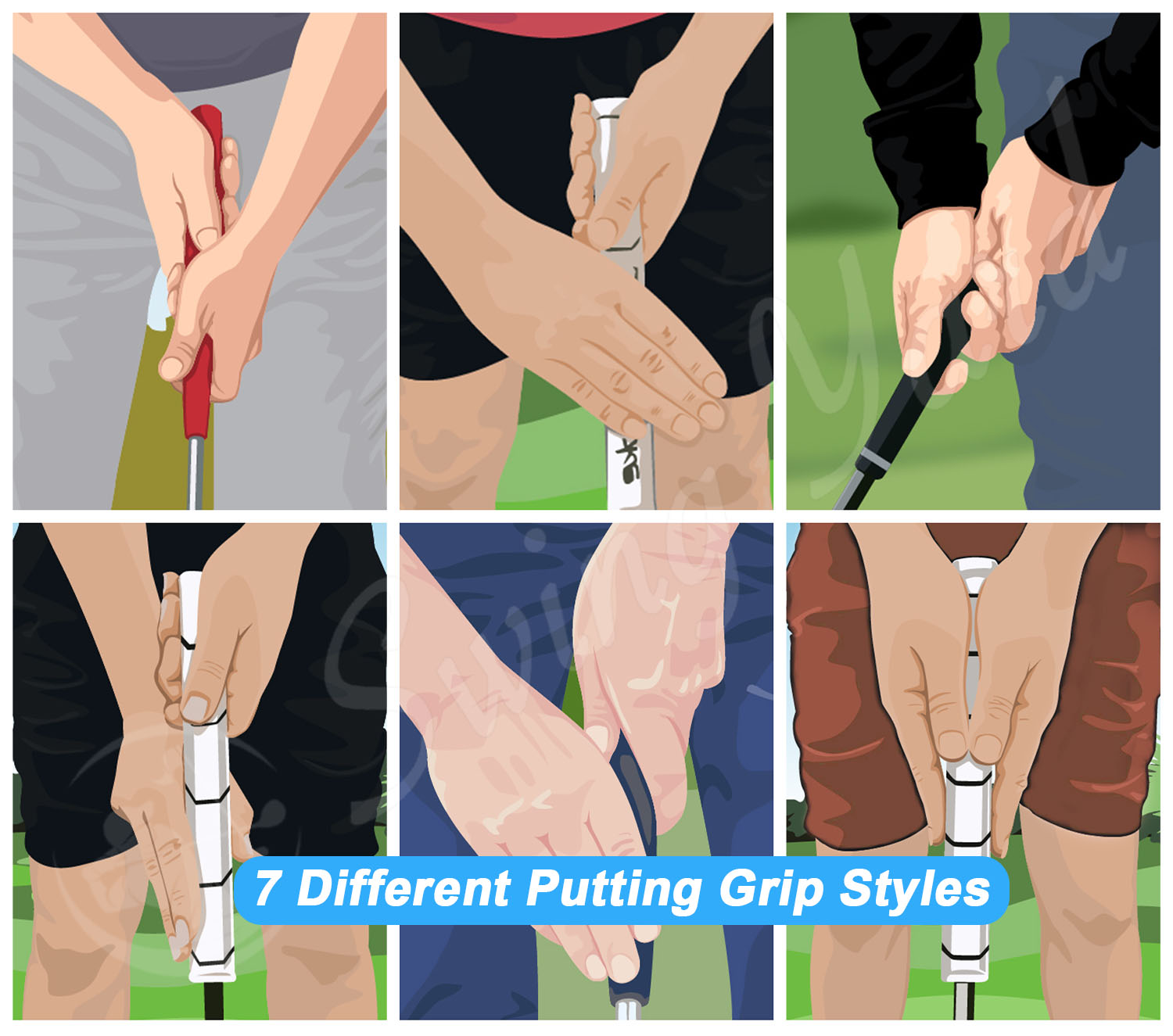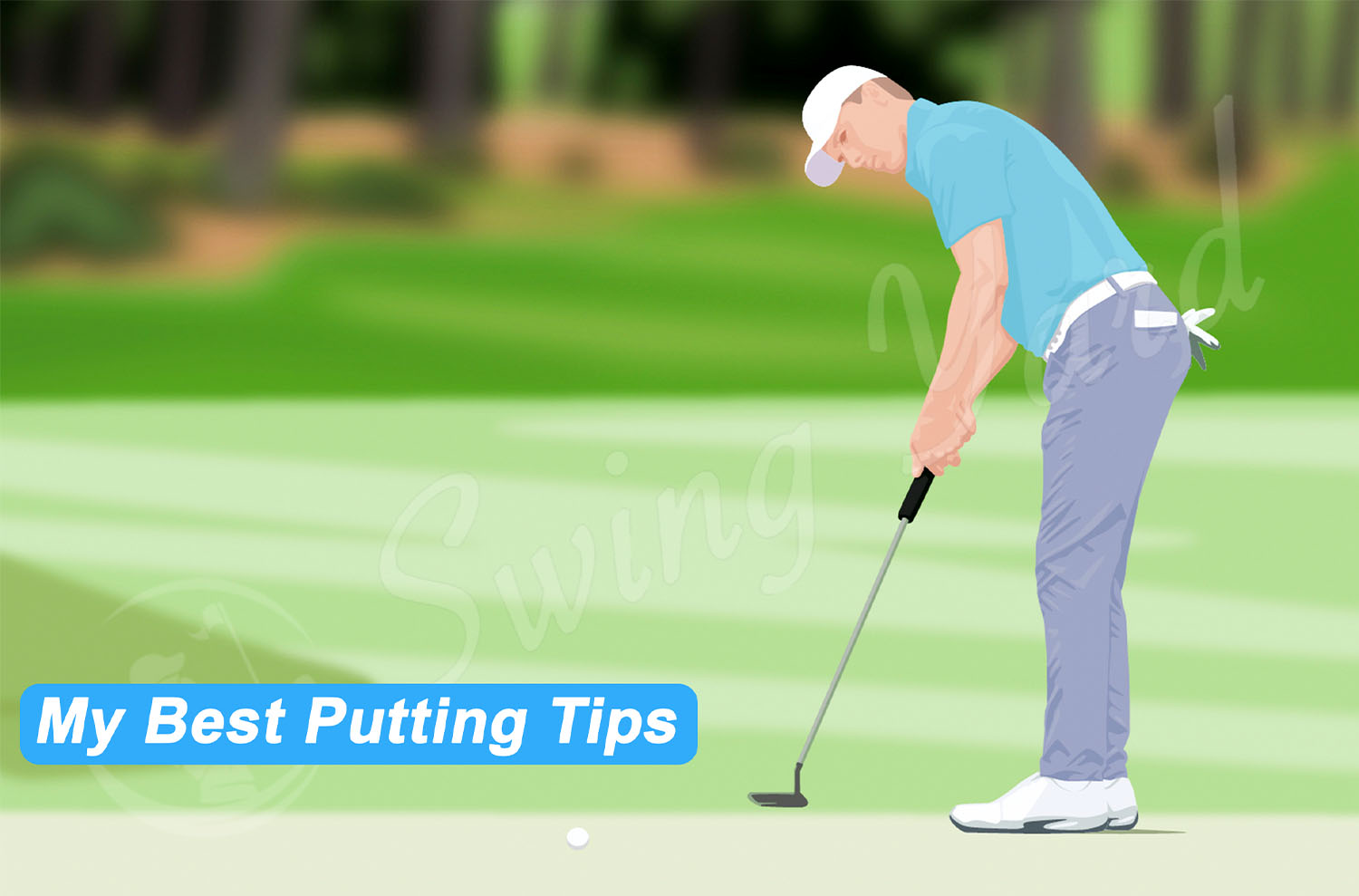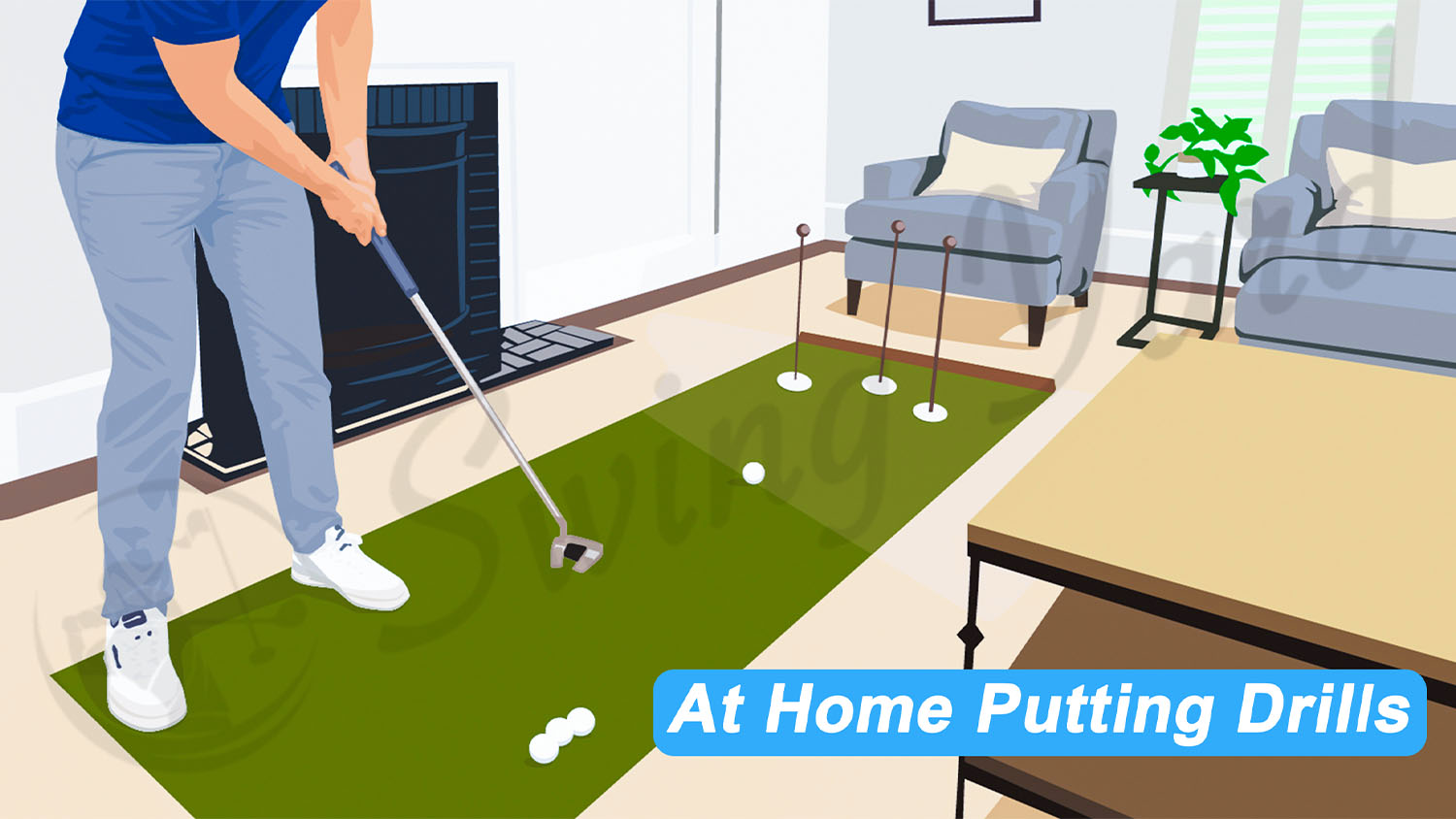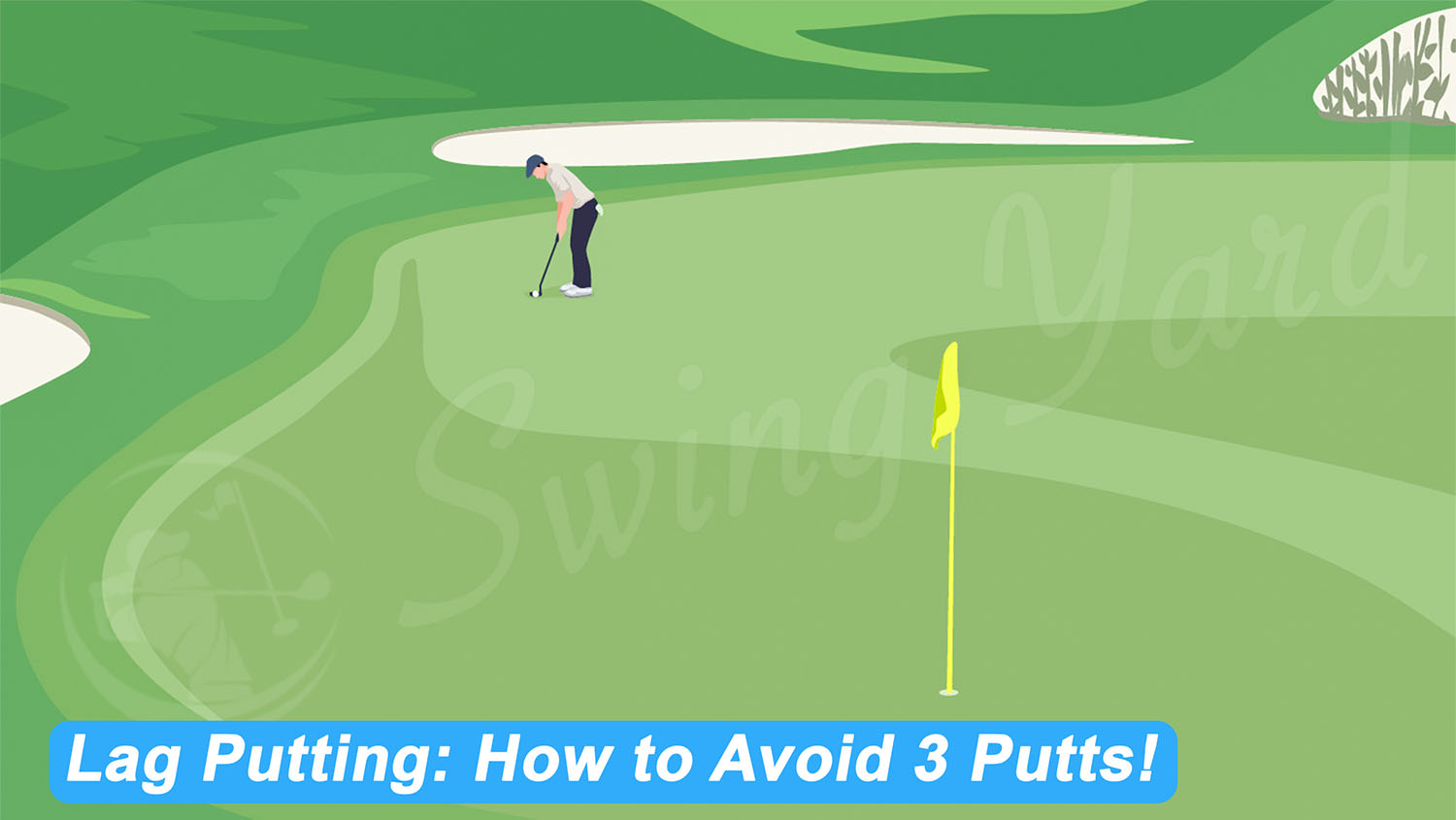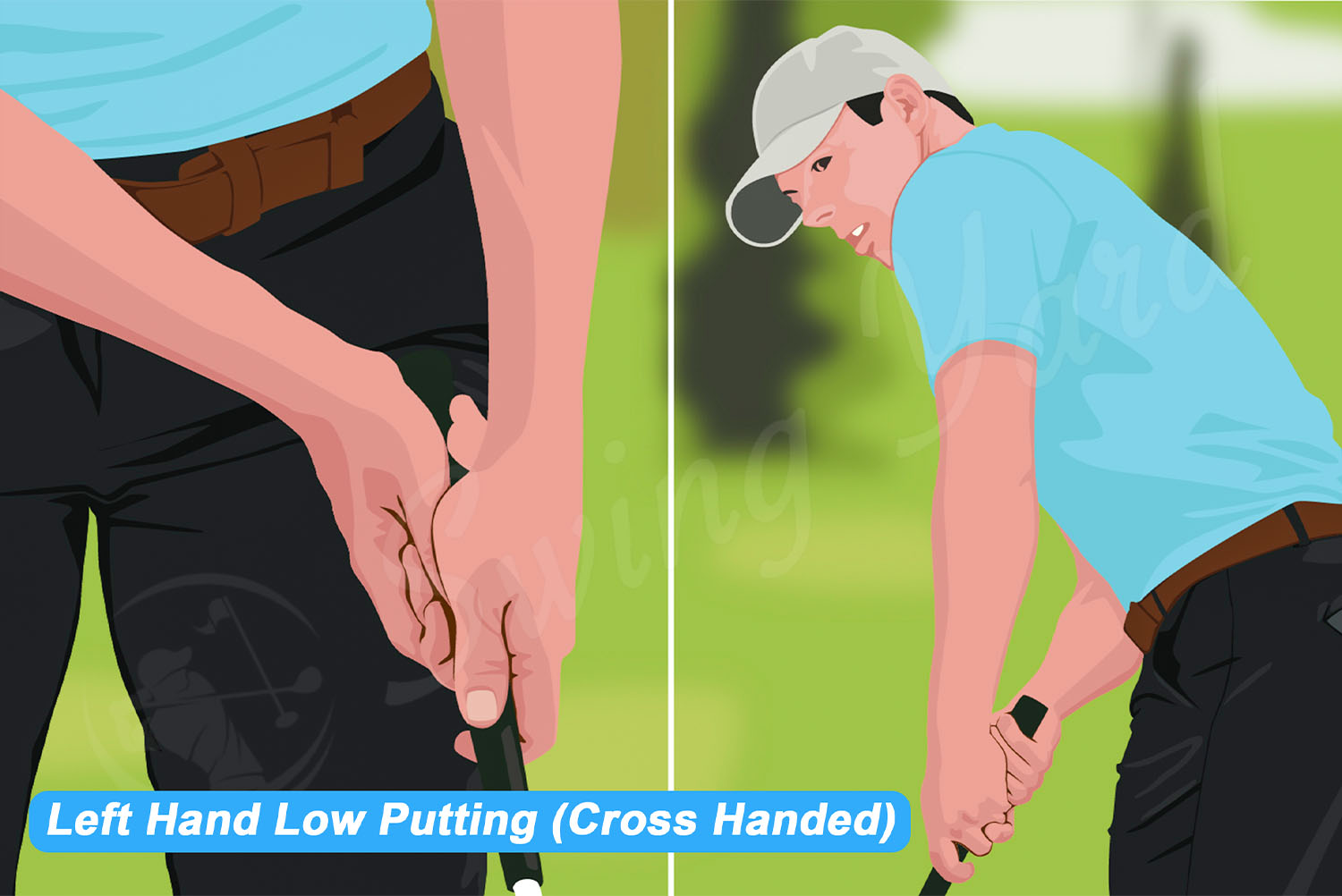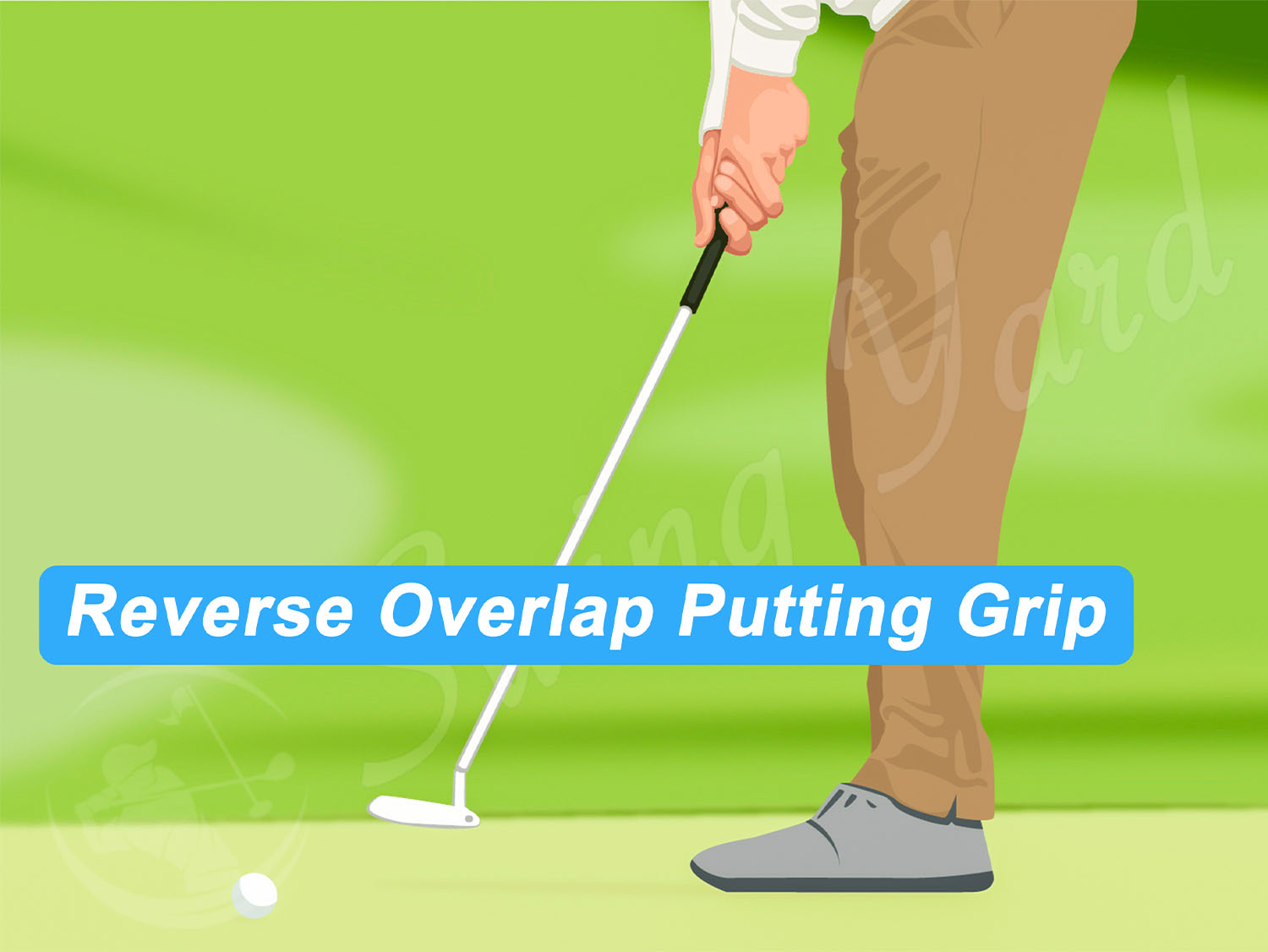Claw Putting Grip (Instructions, Tips, and Pictures)
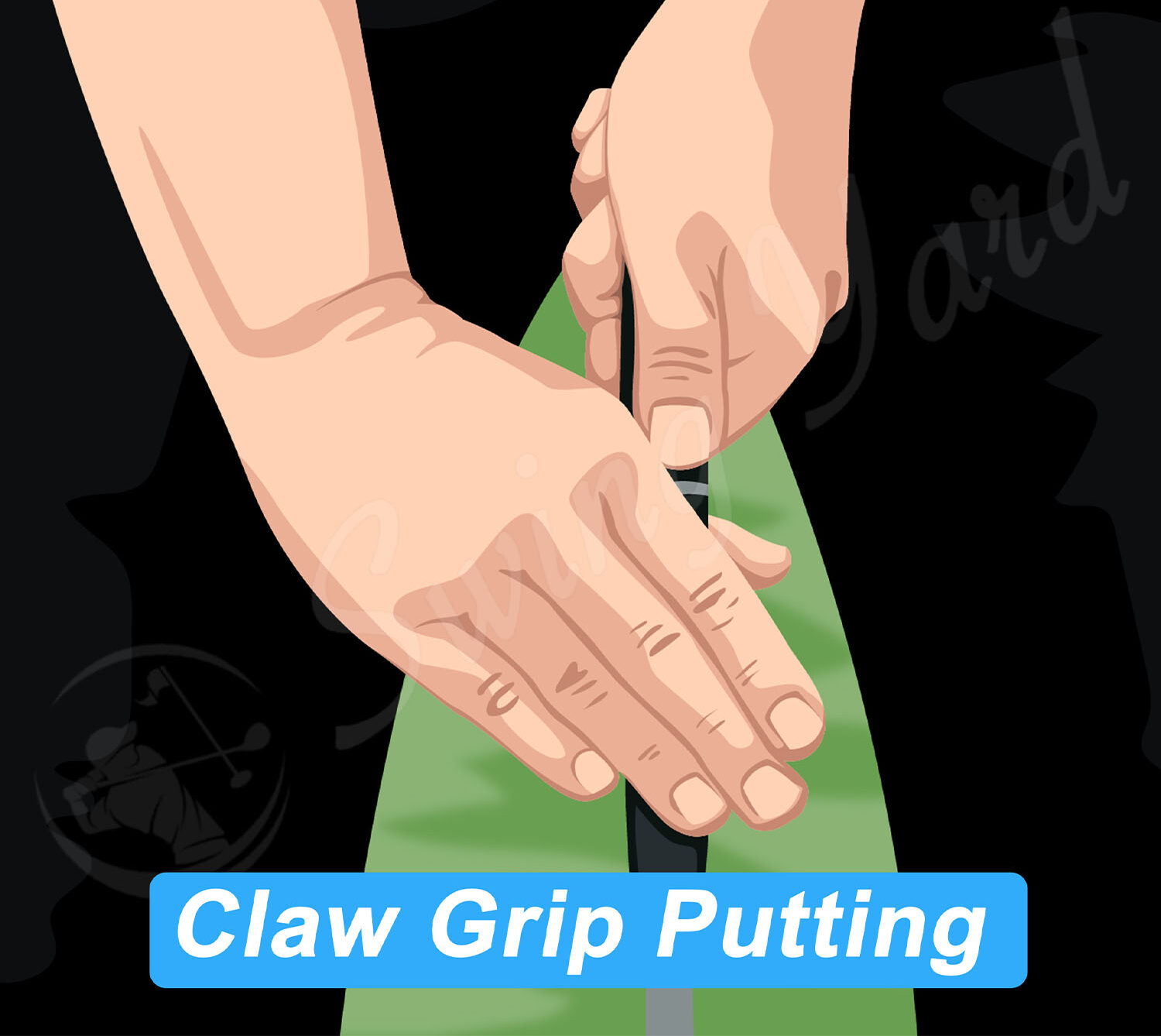
By Coach Erik Schjolberg – Jul 7, 2023
Contents
I can tell you I’ve never made the switch to the claw grip. Using the claw didn’t work for my game long term. However, I have seen many players, both amateur and professional, really get claw grip putting down, and perfect their putting stroke.
I’ll give you all the details to get your hands on the club properly; just remember to choose a putting style that feels most comfortable to you.
Key Takeaways – Claw Grip Putting
- The claw putter grip is a great solution for golfers that want more consistency and stability in their putting stroke
- With the claw grip, the left hand is more in control and considered the lead hand
- A claw putting grip can help reduce grip pressure, and a special oversized or jumbo grip is not always necessary
What Is The Claw Putting Grip?
The claw style putting grip is an unconventional way of gripping and then swinging a golf putter. Where the reverse overlap is probably the most popular putter grip, the claw is rare to find out on the course.
The basics of the claw putting grip have the left hand holding the same way as you would hold the club with any other putting grip. The right hand is where things get funky.
The right hand will make a claw shape. The index finger and middle fingers are on the top of the putter’s shaft, and the putter itself will fit into the space between your thumb and index finger. The claw style putter grip has a few variations that may work depending on the size of your hands and what feels comfortable.
Who Should Use a Claw Putter Grip?
Every putting style has players that it can help. The same can be said for the full swing. Here are the golfers that will benefit the most from playing with the claw putting grip.
Golfers Who Need To Ensure The Left Hand Is The Lead Hand
Wrist action in a putting stroke can be a major issue when it comes to both consistency, and distance control for those long lag putts. The left hand should be leading the way. With the way the right hand is connected to the club in a claw style grip, there is no choice but for it to be along for the ride.
Players That Struggle With Feel or Comfort
Are you a golfer that struggles with feeling like you could always have your hands in a better position? It’s not uncommon to feel uncomfortable on the putting green; it happens to the best players in the game (here’s some more putting tips to help you gain some comfort on the greens). Many golfers just can’t get comfortable with the way the claw grip feels.
Anyone Who Misses the Short Putts
Want to make more putts in that 3-foot range? So many golfers say the claw grip is the best they have found for making these difficult little putts. Honestly, you can even practice those short range putts using your new grip with an office putting green, or your living room.
Golfers That Need Control
The claw grip in golf gives you a little more control of the putter’s shaft but, most importantly, the clubface of the putter. If you know your stroke struggles to get the club head into a neutral position at impact, the claw could help improve things for you.
How To Use The Claw Putting Grip
Now you are ready to give the claw grip a try on the course. The one thing I want to make sure you understand here is that the trail hand position may be slightly different from one player to another. If you have used a conventional putter grip your entire life, the claw most certainly feels like a fresh start!
Top Hand Positioning
The left hand will be the top hand for right handed players. When you use the claw grip, you will have to remember that this top hand is the power hand. Most golfers pick a position for this left hand that is the same as it is in their regular full swing grip.
The thumb is pointing down the putter’s shaft, and the majority of the club stays in the fingers.
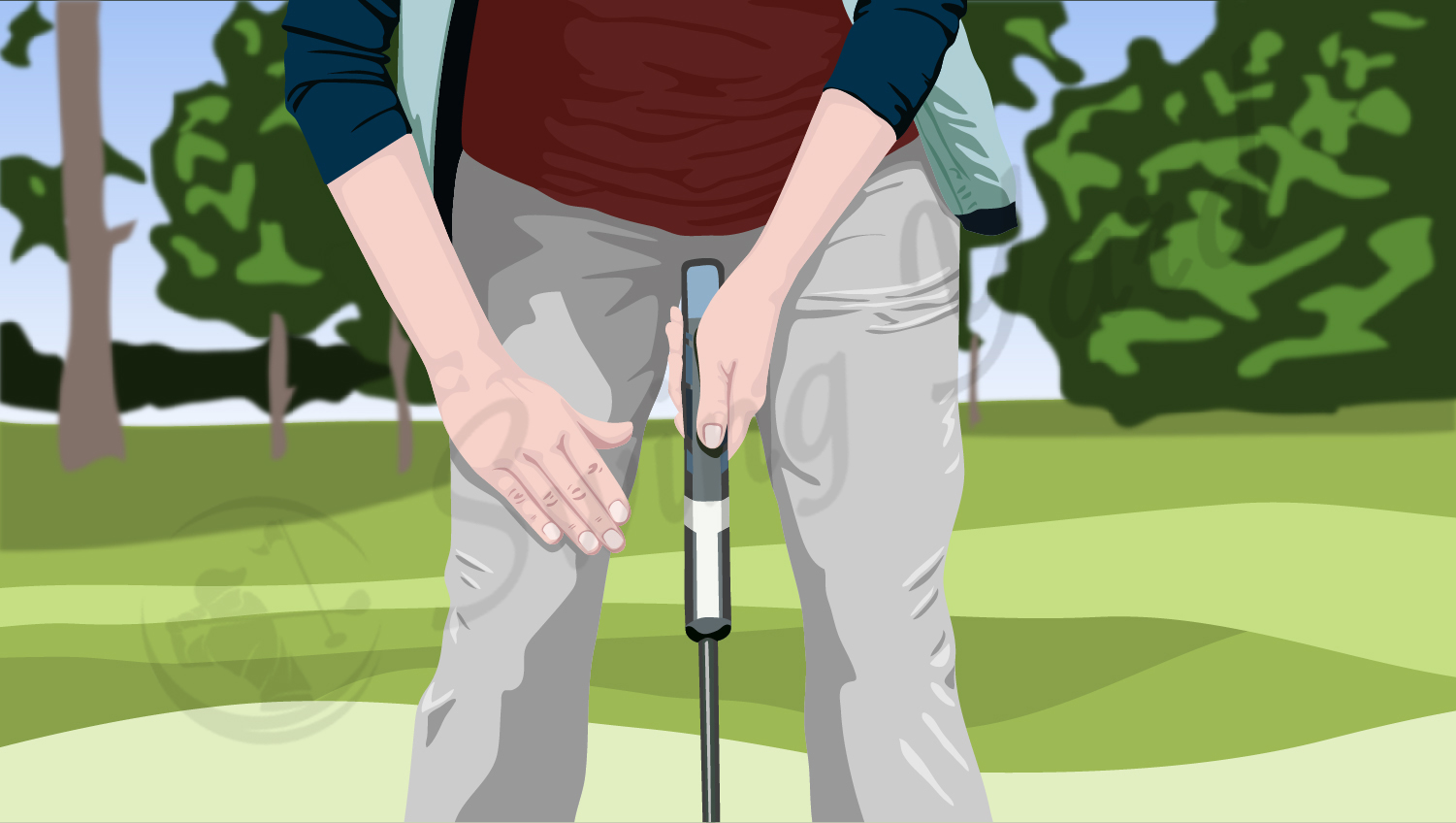

Bottom Hand Positioning
The bottom hand, or the non dominant hand, is the right hand for right-handed players. The first step here is to make a claw shape with your hand.
The thing that makes the bottom hand positioning so weird is the palm facing the body as opposed to the target. Most of the time, when we put our right hand on the club, the palm faces the target. With the claw grip, the palm will face you.
You hold the club between your thumb and fingers, where the index finger (pointer finger) and middle finger will be on the top of the grip.
This is where some players get creative and wrap the other fingers around; others keep them all on top in this passive position. It’s best to not force the position and instead just find something that feels comfortable.
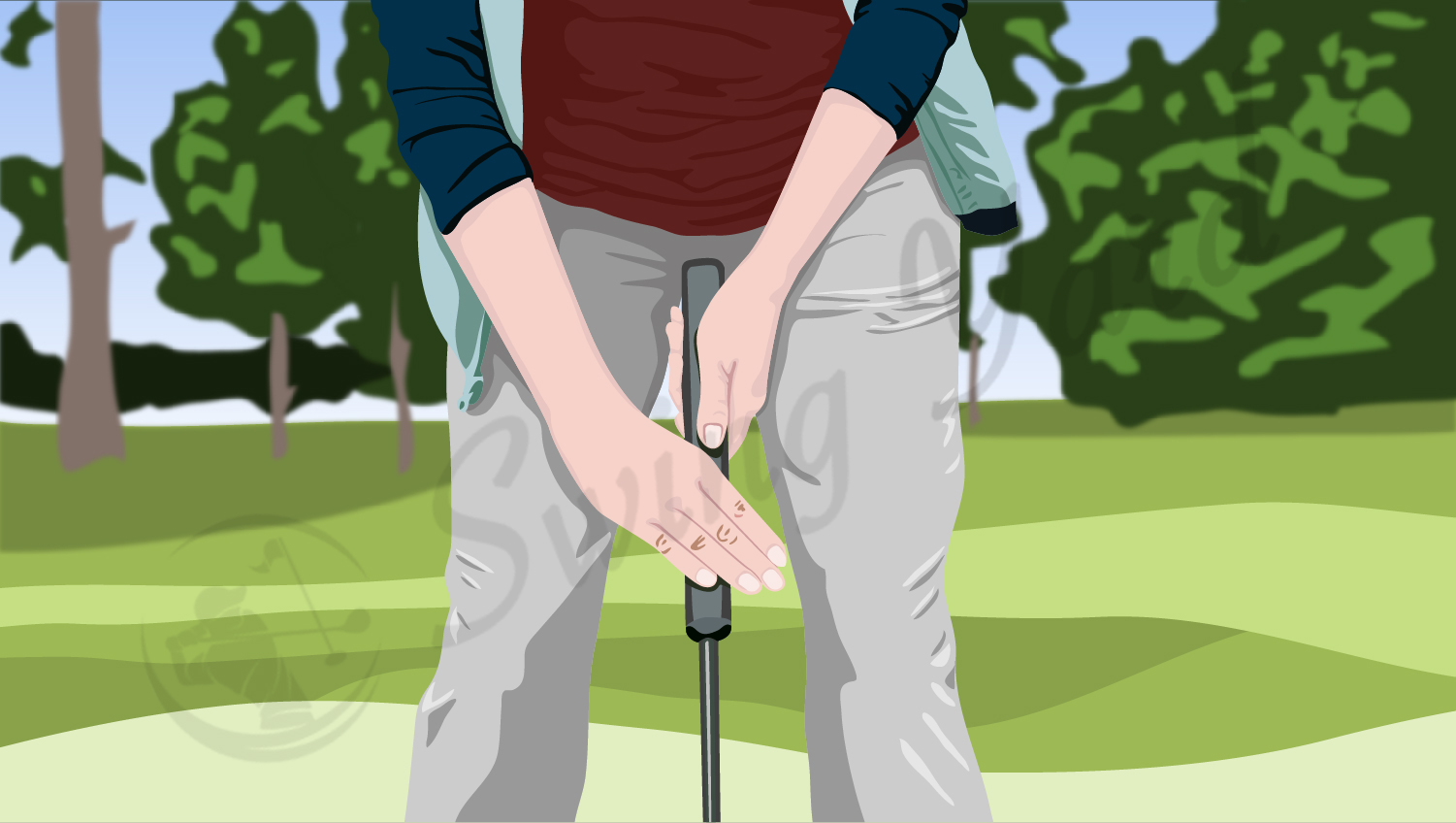

The Stroke
The claw putting grip can work for golfers with both an arc stroke and a straight back straight through stroke. The key with this stroke is to ensure that your shoulders and your left hand are dominating and that your wrists and right hand are more along for the ride.
Sometimes my right hand helps me to keep the putter face square throughout the stroke. This is actually what I like most about the claw golf putting grip, but you do need to make sure the stroke is dominated with the left hand.
Pros and Cons of the Golf Claw Grip
There are more pros than cons to the claw putting grip. However, if you are thinking of making the change, it pays to understand what they are.
Pros
- Helps to ensure less wrist action in the putting stroke
- Can be very accurate on the shorter putts
- Lower grip pressure can be achieved
- It will be a very repeatable stroke when it is learned correctly
- Used by golfers on the PGA Tour
Cons
- Hard to get the position of the right hand at first
- Some players struggle to leave the right hand out of it (if this is you, try a crosshanded putter grip)
- Placement of the pinky and forefinger can feel off (if this is you, try a reverse overlap grip)
Professionals Using The Putting Claw Grip
The putting claw grip is actually quite popular on the PGA Tour. Players have adopted this grip through the years and they have started using the claw more and more. Some of the most well-known professionals using the claw putter grip include:
- Tommy Fleetwood
- Phil Mickelson
- Sergio Garcia
- Webb Simpson
- Mark O’Meara
- Justin Rose
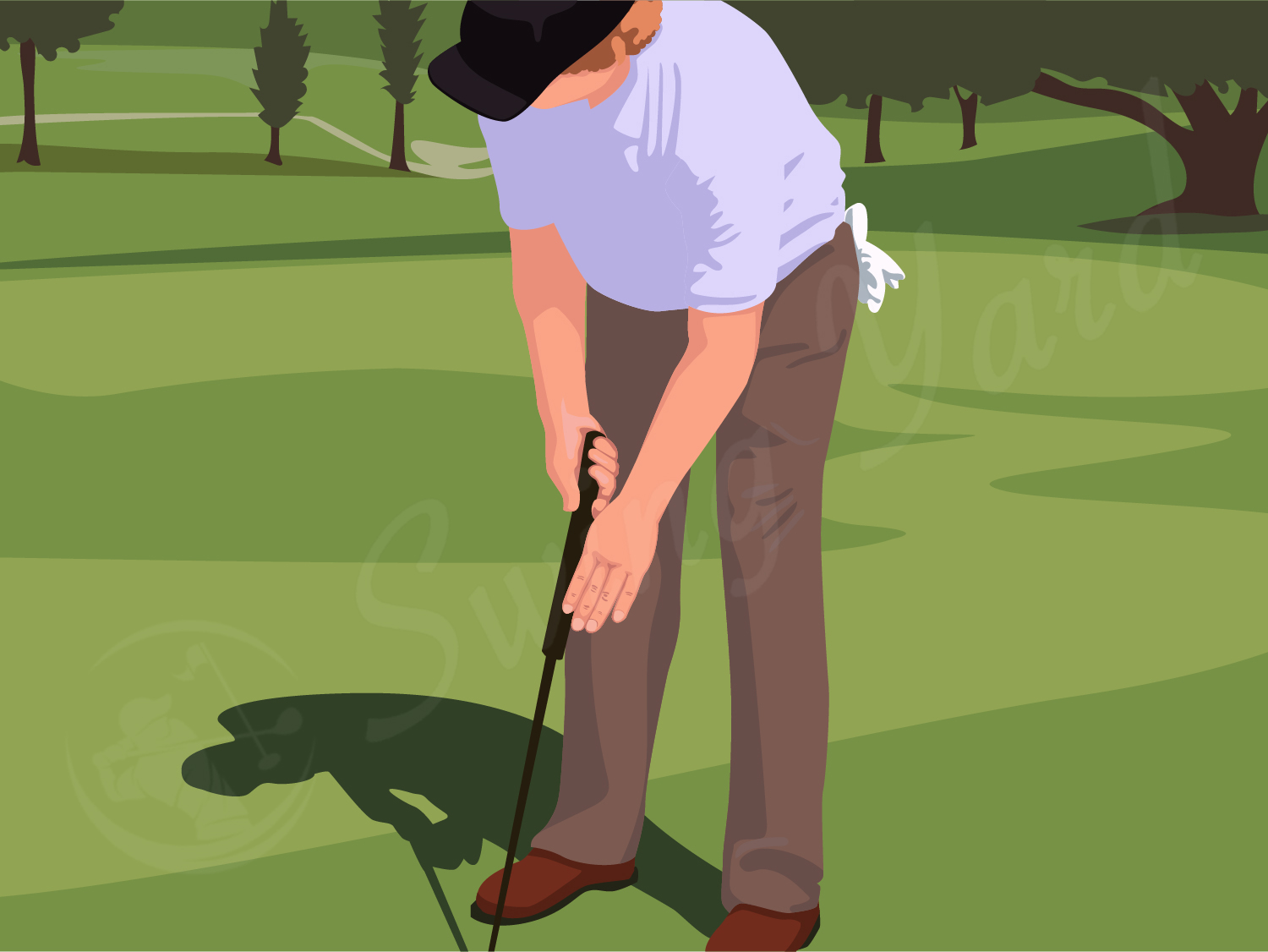

(left handed golfer using the claw putting grip)
FAQ
Here are a few of the most commonly asked questions about the claw putting grip. I know it’s not a conventional style, but most players that I have worked with that have tried it have had some success.
Is the claw grip better for putting?
If you are a golfer that struggles with making short putts and needs to take the wrists out of the putting stroke a bit, the claw grip is a great solution. The golf claw grip creates a stroke dominated by the left hand, a great thing for golfers. If you are a true beginner, I always encourage trying out different putter styles as well.
What is the difference between a saw and claw putting grip?
The saw putting grip (explained here) is a variation of the claw. With the saw, you will see three fingers over the top of the grip, making it appear a little different than the claw. Collin Morikawa has used this grip to play in several events; he even switches to it from time to time during a round. Another grip in the claw family that’s a slight variation is the pencil putter grip (more info here).
Is the claw a good putting grip?
The claw is a good putting grip for golfers that struggle to keep their strokes consistent. One of the great things about putting is the fact that you can keep your grip the same in your long game and just make adjustments on the putting green to help you make more putts.
What is the reverse claw putting grip?
The reverse claw putting grip is essentially the opposite of the standard claw grip discussed in this article. So you basically just switch which hand is doing the “claw” type grip. In the reverse claw grip, your lead hand (left) is the one making the claw, and the trail hand (right) is the one holding the putter regularly. The reverse claw grip is not a super popular grip, but it can be used if it feels right for you.
Final Thoughts
At this point, you should have all the info you need to begin putting with the claw grip. I would highly recommend experimenting with this on the putting green and with some at home drills before taking it to the course.
Remember that even though there are commonly accepted methods for putting using the claw grip, feel free to get creative if you find something that works for you.



